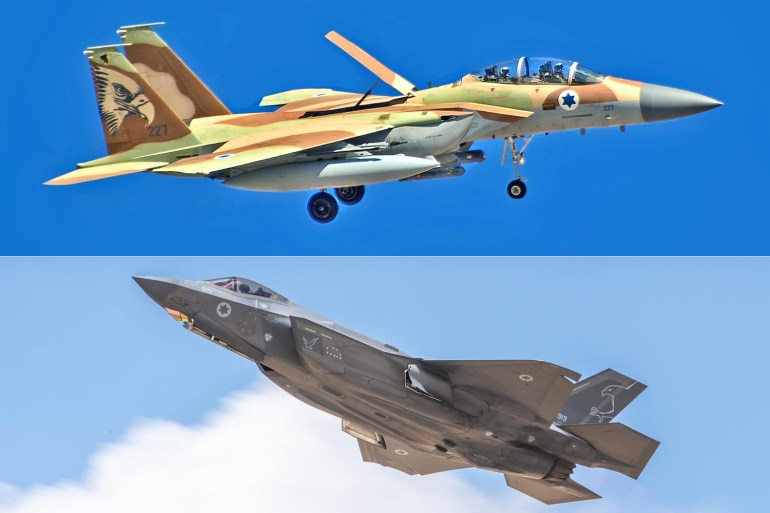On Friday morning, Iranian air defences shot down three drones above its central province of Isfahan.
Iran has yet to announce the results of its investigation into the incident, but the US said early on that Israel launched the attack. Israel has not commented despite speculation that it was behind it.
Observers have, however, been anticipating an Israeli attack on Iran as the next link in a chain of escalation that began with an April 1 attack on the Iranian mission in Damascus that Iran blamed on Israel.
The second was Iran launching 331 drones and missiles towards Israel on Saturday night in a well-choreographed attack, giving rise to expectations of an Israeli response.
But if Israel were to strike Iran, how would it go about it?
Israel has been planning strikes on sensitive Iranian sites for decades, but this response would have to be limited, part of the coded diplomatic and military dialogue between Iran and Israel.
Israel would have to hit a high-value target but not one so valuable it would warrant a further military response from Iran and push the escalation into a full-on conflict.
So what are Israel’s choices?
Air strikes
The two countries are more than 900km (560 miles) apart at their closest point with most of Iran’s military bases and nuclear sites more than 2,000km (1,243 miles) away from Israel.
For strikes deep inside Iran, F-15i Ra’am and F-35i Adir stealth jets would be used.

Both aircraft are optimised for long-range, but they would still need to refuel unless taking the shortest routes to Iranian targets near the border. The route would also be tricky.
It is unlikely Saudi Arabia or Jordan would give Israel permission to fly through their airspace to attack Iran because it could draw them into a potential conflict and stands a good chance of inflaming domestic opinion, already vocal against Israel’s war on Gaza.
Flying down the Red Sea and around Yemen and Oman to attack targets in southern Iran would mean a 4,700km (2,920-mile) trip before Israeli jets even reach the Iranian coastline.
The fastest route to attack targets in the north of Iran would be through Syria and Iraq. The Israeli air force would have to suppress Syria’s air defences either by jamming or by cyberattack, as in 2007 when Israel destroyed what it said was a nuclear reactor being built in Syria. Israel “switched off” a large section of Syria’s air defence radar network beforehand.
A technique like this could be used only in strategically important moments like a major air strike or at the start of a conflict. Even if Israel could still do this, it’s highly unlikely it would “show its hand” and reveal a major capability.
Extended range
External fuel tanks added to fighter jets can significantly extend their range but would make them show up on enemy radar.
There have been reports of Israel-designed fuel tanks that can be fitted on their F-35 Adirs that would still allow them to stay moderately stealthy and invisible to radar.
The tanks, to be jettisoned later, would allow the aircraft to reach and destroy targets much deeper inside Iran, return to their home airbases without being seen and fly unaided by the usual accompanying jets needed to destroy radar and protect fighter-bombers from other fighters.
The plan would still be complex and, like all complex plans, subject to failure at its weakest link. Bad luck or enhanced radar the Iranians have not yet revealed could contribute to Israeli jets getting shot down – not the message of invincibility or revenge Israel wants to send.
The naval option
Israel has at its disposal five Dolphin-class submarines, German diesel-electric subs that run quietly and are ideal for coastal operations.
Two of the latest subs built for Israel have AIP, or air-independent propulsion, meaning they can stay submerged for weeks as they stalk potential targets.
One of the more obvious targets is the Behshad, an intelligence-gathering command ship that belongs to Iran’s Islamic Revolutionary Guard Corp (IRGC). It had been at sea for three years and was positioned up until recently at the mouth of the Red Sea near the Bab al-Mandeb Strait.
It was ordered back to port, and satellite imagery put it just outside the naval base at Bandar Abbas, just within the Strait of Hormuz.
The ship is now in home waters and protected by shore defences but not invulnerable. The Dolphin-class subs are armed with a land attack variant of the Popeye cruise missile, the Turbo Popeye, having a range of 200km to 350km (124-217 miles) and launchable under water through the submarines’ torpedo tubes.
The Dolphin subs are part of Israel’s nuclear deterrent, and there are reports a version of the Popeye has a range of 1,500km (932 miles) and the latest version of the improved Dolphin-class has a VLS (vertical launching system) in its sail, allowing for longer missiles to be launched that would hold more fuel and, therefore, have a longer range.
It would be far easier to attack Iranian coastal targets from international waters, then submerge and disappear. Again, the target would have to be big enough to make its point but not large enough that it has to invite a response from Iran.
These are the two real options. Any other military action, such as using special operations troops – Israeli boots on Iranian soil – stands the chance of escalating the conflict.
The real question is, will Israel risk a full-scale war while it is already fighting on two fronts, one war on Gaza and a slow-burning confrontation with Lebanon’s Hezbollah.
Read More: World News | Entertainment News | Celeb News
Aljazera









